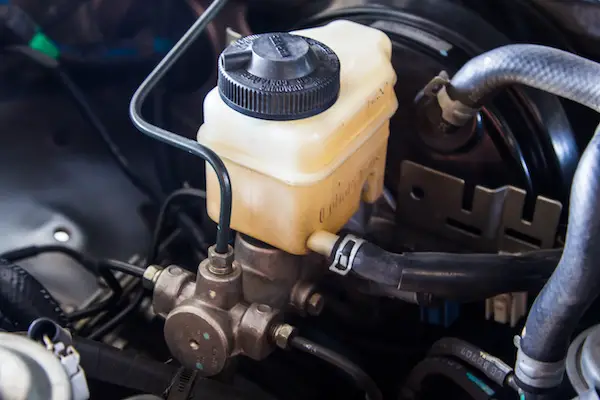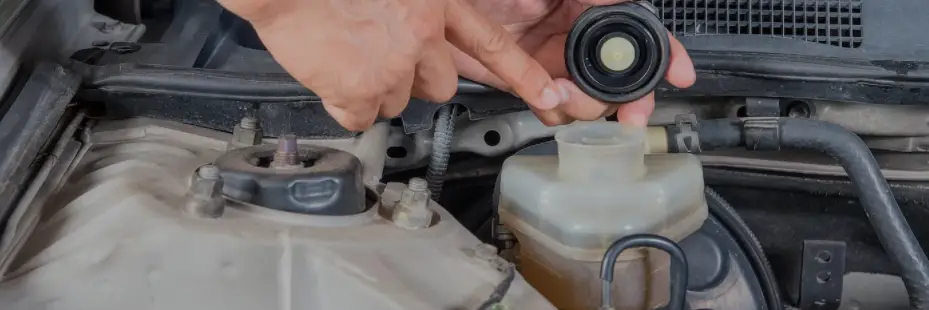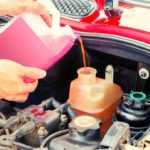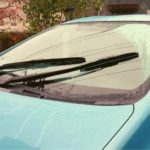Brake fluid is an essential component of your vehicle’s braking system. It is responsible for transmitting the force from your foot on the brake pedal to the brakes themselves, allowing you to slow down and stop your vehicle safely.
Over time, brake fluid can become contaminated with moisture and other impurities, which can affect its performance and potentially lead to brake failure.
This is where a brake fluid flush comes in. In this article, we will discuss everything you need to know about brake fluid flushes, including the cost, frequency, and DIY options.
Table of Contents
What is Brake Fluid Flush?

A brake fluid flush is the process of replacing the old brake fluid in your vehicle with new brake fluid. A brake fluid flush removes the old, contaminated fluid and replaces it with fresh, clean fluid, ensuring that your brakes continue to function properly.
As mentioned earlier, brake fluid is hygroscopic, meaning it absorbs moisture from the air over time. This moisture can lower the boiling point of the brake fluid and reduce its effectiveness.
Why is it important?
Having clean brake fluid is crucial for the safety and performance of your vehicle. Contaminated brake fluid can cause corrosion in the braking system, leading to costly repairs. It can also affect the responsiveness of your brakes, making it harder to stop your vehicle quickly in emergency situations. Regularly flushing your brake fluid can prevent these issues and keep your brakes functioning at their best.
Signs that you need a brake fluid flush
There are a few signs that indicate it’s time for a brake fluid flush. The most obvious one is if your brake fluid is dark or discolored. This is a sign of contamination and means that it’s time to replace the fluid. Other signs include a spongy or soft brake pedal, longer stopping distances, and a burning smell when you apply the brakes. If you notice any of these signs, it’s best to have your brake fluid checked and flushed if necessary.
Flush Brake Fluid Cost

The cost of a brake fluid flush will vary depending on the type of vehicle you have and where you have it done. In general, you can expect to pay between $50 and $100 for a brake fluid flush. This cost includes the labor and materials needed for the flush. Keep in mind that this is just an estimate, and the actual cost may vary depending on your location and the specific needs of your vehicle.
Factors that affect the cost
As mentioned earlier, the cost of a brake fluid flush can vary depending on several factors. These include the type of vehicle you have, the type of brake fluid used, and where you have the flush done. Luxury or high-performance vehicles may require more expensive brake fluid, which can increase the overall cost. Additionally, having the flush done at a dealership or a specialized mechanic may be more expensive than at a regular auto repair shop.
Is it worth the cost?
Some people may question whether a brake fluid flush is worth the cost. However, considering the potential consequences of not having clean brake fluid, it is definitely worth the investment. Regularly flushing your brake fluid can prevent costly repairs and ensure the safety of your vehicle and its passengers.
How Often To Brake Fluid Flush
The recommended frequency for a brake fluid flush will also vary depending on the type of vehicle you have and the driving conditions you expose it to. However, most experts recommend flushing your brake fluid every 2-3 years or 30,000 miles. This timeframe may be shorter for vehicles that are driven in harsh conditions, such as heavy traffic or extreme temperatures.
Why should you follow the recommended frequency?
Following the recommended frequency for a brake fluid flush is crucial for maintaining the performance and safety of your vehicle. As mentioned earlier, contaminated brake fluid can lead to corrosion and affect the responsiveness of your brakes. By regularly flushing your brake fluid, you can prevent these issues and ensure that your brakes are always functioning at their best.
How to check your brake fluid
If you’re not sure when your last brake fluid flush was or if you need one, you can check your brake fluid yourself. Most vehicles have a translucent brake fluid reservoir under the hood, making it easy to see the level and condition of the fluid.
If the fluid is dark or discolored, it’s time for a flush. Additionally, if the level is below the minimum mark, it may also indicate a leak in the system, which should be addressed immediately.
Flush Brake Fluid DIY
Yes, it is possible to do a DIY brake fluid flush. However, it is important to be aware of the safety risks involved and to follow the instructions carefully. If you are not comfortable doing a brake fluid flush yourself, you can always take your vehicle to a qualified mechanic. But if you’re up for the challenge, here’s how you can do it yourself:
What you’ll need
- New brake fluid (check your vehicle’s manual for the recommended type)
- A jack and jack stands
- A wrench or socket set
- A turkey baster or syringe
- A clear plastic tube
- A container to catch the old brake fluid
- Rags or paper towels
Step-by-step process
- Park your vehicle on a flat surface and engage the parking brake.
- Lift the vehicle using a jack and secure it with jack stands.
- Locate the brake fluid reservoir under the hood and remove the cap.
- Using a turkey baster or syringe, remove as much of the old brake fluid from the reservoir as possible.
- Attach one end of the clear plastic tube to the bleeder valve on the brake caliper and the other end to the container.
- Have someone sit in the driver’s seat and slowly pump the brake pedal until the fluid starts to flow through the tube.
- Once the fluid is flowing, have the person in the driver’s seat continue to pump the pedal while you open the bleeder valve to allow the old fluid to drain out.
- Keep an eye on the fluid level in the reservoir and make sure it doesn’t run dry. If necessary, top it up with new brake fluid.
- Continue this process until the fluid coming out of the bleeder valve is clear and free of air bubbles.
- Repeat this process for each brake caliper, starting with the one furthest from the brake fluid reservoir.
- Once all the calipers have been flushed, top up the reservoir with new brake fluid and replace the cap.
- Lower the vehicle and take it for a test drive to ensure that the brakes are working properly.
Flush Brake Fluid Near Me
You can get a brake fluid flush at most auto repair shops and tire dealerships. You can also find brake fluid flush kits at most auto parts stores. However, it’s essential to do your research and choose a reputable and experienced mechanic or shop for the best results. Here are some tips for finding a reliable place to get a brake fluid flush near you:
Ask for recommendations
One of the best ways to find a good mechanic or shop is by asking for recommendations from friends, family, or coworkers. They can provide honest feedback based on their personal experiences, which can help you make an informed decision.
Read online reviews
In today’s digital age, it’s easy to find reviews and ratings for almost any business online. Take some time to read reviews from previous customers to get an idea of the quality of service provided by different mechanics or shops in your area.
Check for certifications and accreditations
A reputable mechanic or shop should have the necessary certifications and accreditations to perform a brake fluid flush. Look for certifications from organizations such as the National Institute for Automotive Service Excellence (ASE) or the Automotive Service Association (ASA).
Flush Brake Fluid at Home
Yes, it is possible to flush brake fluid at home. However, as mentioned earlier, it’s essential to follow the instructions carefully and take all necessary safety precautions. If you’re not comfortable doing a brake fluid flush yourself, it’s always best to leave it to a professional. Here are some additional tips for safely flushing your brake fluid at home:
Wear protective gear
Brake fluid is corrosive and can cause skin irritation. It’s important to wear gloves and eye protection when handling brake fluid to avoid any contact with your skin or eyes.
Dispose of old brake fluid properly
Old brake fluid is considered hazardous waste and should be disposed of properly. Check with your local waste management facility for guidelines on how to dispose of it safely.
Use the right tools
Make sure you have all the necessary tools and equipment before attempting a DIY brake fluid flush. Using the wrong tools can lead to accidents or damage to your vehicle.
Flush Brake Fluid Motorcycle
Just like cars, motorcycles also require regular brake fluid flushes. The process is similar to that of a car, but there are a few key differences to keep in mind. Here are some tips for flushing brake fluid on a motorcycle:
- Refer to your motorcycle’s manual for specific instructions and recommended brake fluid type.
- Some motorcycles may have a separate reservoir for the front and rear brakes, so make sure to check both.
- Use a motorcycle stand or have someone hold the bike upright while flushing the brake fluid.
- Be careful not to over-tighten the bleeder valve when closing it, as this can cause damage to the threads.
Flush Brake Fluid Necessary
Some people may question whether a brake fluid flush is necessary, especially if they have never experienced any issues with their brakes. However, as mentioned earlier, regularly flushing your brake fluid is crucial for maintaining the performance and safety of your vehicle. It’s always better to be proactive and prevent potential problems rather than waiting for them to occur.
Flush Brake Fluid with Vacuum Pump
Using a vacuum pump is another method for flushing brake fluid. This method uses suction to remove old fluid from the system and replace it with new fluid. Here’s how you can flush brake fluid with a vacuum pump:
- Attach the vacuum pump to the bleeder valve on the brake caliper.
- Open the bleeder valve and use the pump to create suction, pulling out the old fluid.
- Once the fluid stops flowing, close the bleeder valve and refill the reservoir with new brake fluid.
- Repeat this process until the fluid coming out of the bleeder valve is clear and free of air bubbles.
Flush Brake Fluid Procedure
The procedure for flushing brake fluid may vary slightly depending on the type of vehicle you have or the method used. However, the general steps are as follows:
- Park your vehicle on a flat surface and engage the parking brake.
- Lift the vehicle using a jack and secure it with jack stands.
- Locate the brake fluid reservoir under the hood and remove the cap.
- Using a turkey baster or syringe, remove as much of the old brake fluid from the reservoir as possible.
- Attach one end of the clear plastic tube to the bleeder valve on the brake caliper and the other end to the container.
- Have someone sit in the driver’s seat and slowly pump the brake pedal until the fluid starts to flow through the tube.
- Once the fluid is flowing, have the person in the driver’s seat continue to pump the pedal while you open the bleeder valve to allow the old fluid to drain out.
- Keep an eye on the fluid level in the reservoir and make sure it doesn’t run dry. If necessary, top it up with new brake fluid.
- Continue this process until the fluid coming out of the bleeder valve is clear and free of air bubbles.
- Repeat this process for each brake caliper, starting with the one furthest from the brake fluid reservoir.
- Once all the calipers have been flushed, top up the reservoir with new brake fluid and replace the cap.
- Lower the vehicle and take it for a test drive to ensure that the brakes are working properly.
Flush Brake Fluid from Reddit Users Opinions
Reddit is a popular online forum where users can discuss various topics, including automotive maintenance and repairs. There are several threads on Reddit discussing brake fluid flushes, with some users sharing their experiences and tips.
However, it’s important to note that not all information on Reddit may be accurate, so it’s always best to do your own research and consult a professional before attempting any DIY maintenance.
Flush Brake Fluid Tool
Having the right tools is crucial for successfully flushing brake fluid. Some essential tools for a brake fluid flush include a turkey baster or syringe, a clear plastic tube, and a container to catch the old fluid.
Additionally, you may need a wrench or socket set to open the bleeder valves and a jack and jack stands to lift the vehicle. You can also use a vacuum pump as an alternative method for flushing brake fluid.
Flush Brake Fluid ABS
Anti-lock braking systems (ABS) are becoming increasingly common in modern vehicles. These systems use sensors to prevent the wheels from locking up during emergency braking, improving control and stability.
When flushing brake fluid on a vehicle with ABS, it’s essential to follow the manufacturer’s instructions and use the recommended type of brake fluid. Flushing the brake fluid can also help maintain the performance of the ABS system.
Flush Brake Fluid F150
The Ford F150 is a popular truck among drivers, and like any other vehicle, it requires regular maintenance to keep it running smoothly.
Flushing the brake fluid on an F150 is similar to the general procedure mentioned earlier. However, it’s always best to refer to your vehicle’s manual for specific instructions and recommended brake fluid type.
Change Brake Fluid
Changing brake fluid is another term used for flushing brake fluid. It refers to the process of replacing the old, contaminated fluid with new, clean fluid. Regularly changing your brake fluid can prevent costly repairs and ensure the safety and performance of your vehicle.
Replace Brake Fluid
Replacing brake fluid is another way of saying flushing brake fluid. As mentioned earlier, this process involves removing the old brake fluid and replacing it with new fluid to maintain the performance and safety of your vehicle’s braking system.
Video
Conclusion
A brake fluid flush may not be the most exciting or glamorous aspect of vehicle maintenance, but it is crucial for keeping your brakes functioning at their best. By regularly flushing your brake fluid, you can prevent costly repairs and ensure the safety of yourself and others on the road.
Whether you choose to do it yourself or have a professional do it, make sure to follow the recommended frequency and use the right tools and materials for the best results.
Hi there! I’m Naomi O’Colman. I’ve got years of experience working at an auto repair shop here in Texas under my belt. On top of that, ever since I was a kid I’ve been passionate about the auto industry. Since I’ve joined the team at automotivegearz.com I’ve been enthusiastically sharing my passion and insights with my readers. I’m dedicated to delivering high quality content and helping you stay up to date with the latest automotive trends and products out there!






